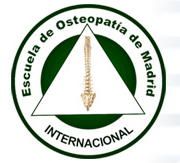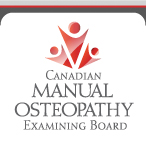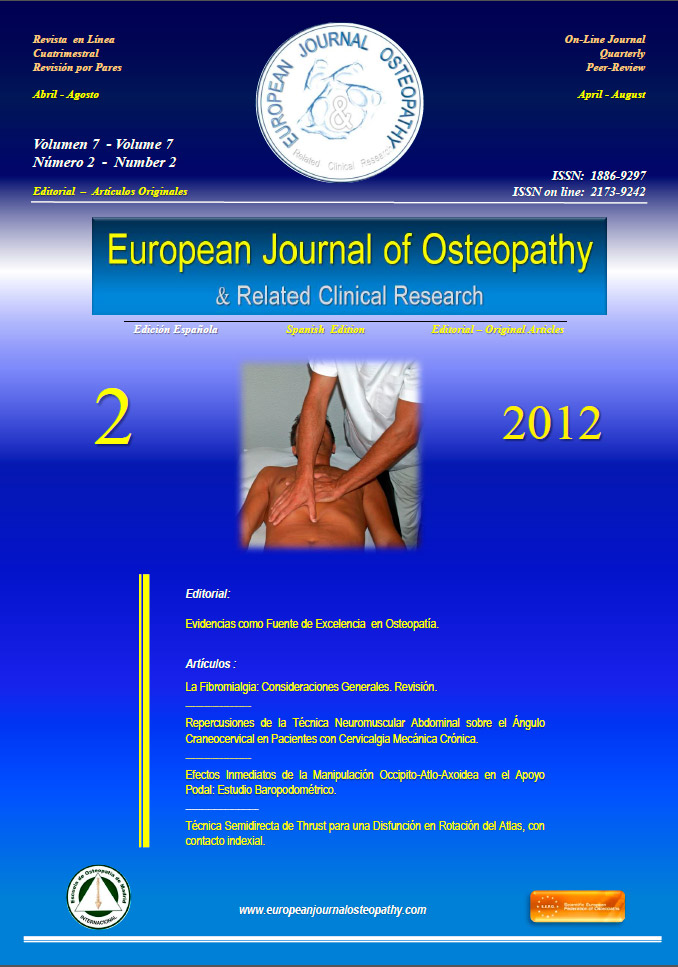By Sonja H. Sutherland, GCFP
Through movement we experience our world. Long before verbal and cognitive development take center stage, we learn through our actions—through how we react to and interact with our environment and ourselves. By using movement as a vehicle for learning, we not only tap into these early learning patterns, but also into inherited ancient evolutionary patterns. This makes movement a potent and powerful learning tool.
Over the past eleven years, I have developed and taught movement curriculum at a private elementary school. While the content of my classes is influenced by my background in dance, aikido and formative psychology, my approach—how I teach and the dynamic nature of the classes—is based on principles from the Feldenkrais Method®.
Through teaching and participating in Awareness through Movement® classes, I have been fascinated by how lessons evoke very personal, unique and potent learning experiences for each individual within a group. The Feldenkrais Method taps into a universal, inherited potential of human development by speaking to each participant according to his or her specific circumstance. How can we learn from this to create personal, relevant learning in group movement classes with children?
In “Creative Learning Through Movement” classes, our emphasis is not learning how to move, but rather using movement as an educational tool for learning. We solve movement puzzles, generate and develop ideas through doing and invent movement solutions. We play dynamic games that increase spatial awareness and develop interpersonal skills through nonverbal collaborations. We explore the anatomy of emotions and how we shape our feelings. We translate classroom curriculum into experiential education, making it tangible and personal.
By grounding problem solving, emotional exploration and creative thinking in physical experience and expression, Creative Learning through Movement fosters the relationship between our thinking, actions, feelings and sensations. This integrates cognitive, sensorial, emotional and motor development, adding greater potency and relevance to learning.
We listen to the rhythms from the drum.

“Can you hear the ‘low-to-the-ground’ rhythm? How do you move?”
Someone is slithering on her belly. Someone else walks on all fours. Following the children’s movement inventions and guiding our discoveries through inquiry, we explore developmental movement—from swimming in the womb to entering the world of breathing and gravity.
“Can you hear the “circular” rhythm?

Creativity reigns. The children spin, roll, tumble and cartwheel; they stay in one place and make circular movements with various body parts; they slither, crawl and fly through space making circles in the air and on the ground. We share our solutions and try out each other’s.
We hop, skip, jump and squiggle along straight lines, curves, zigzags, and circles. We trace these on the floor with our hands and feet. We outline them in the air with our elbows and knees. Put these together and what do we get? Letters.
The drum is our guide. When it plays, the children move; when it stops, they freeze.
“If your name begins with B‚ you may move. If you know someone whose name starts with T‚ you may move. Find the first letter of your name on the floor and trace it with your hands and feet. Can you trace it on the ceiling? How about draw it in the air? Who can find a vowel to trace?”
And so we begin to explore the basic elements of writing. From lines to letters to words, what does it spell? Embodied Learning.
Just as children develop their handwriting—-their signatures, they also learn to give form to their feelings and to shape their own unique movement signatures.
We create shapes with our bodies: Straight, angular, and curvy shapes. Some shapes twist and then untwist. Smooth shapes grow bumps. Bent shapes straighten out and then bend up again one part at a time. Some shapes float, others sink. Shapes explode, melt, freeze. We explore the fundamentals of moving—time, space, energy and flow. Our shapes travel, transform, change level, direction, tempo. We connect our shapes. Some support and others need support.
How do we shape our feelings and how do our feelings shape us? How do you create a mad shape? Do you twist, bend, curve, stay straight? What qualities does your mad shape have? Are you strong or light? Soft or hard? Collapsed or full? On a scale of one to ten, how mad is your shape? How might you travel through space with your mad shape? Let’s take the intensity of your mad shape down two counts; does it get more dense or less? Softer or harder? Is it more full or less? We explore happy, scared, brave, sad, sneaky, silly shapes.
We’ve all heard the saying “Actions speak louder than words”. They are not only louder, but both actions and reactions are faster. In school, children are encouraged to use their words and “talk it out” when they disagree. But what about teaching clear, direct ways of influencing how we act and react? We play movement games that foster “conflict resolving and problem solving” in action, through action.
In the classroom, the children are studying the ocean. Sea creatures everywhere! Utilizing the great variety of textures, flow, and speeds of the sea, we explore qualities of movement. How does your sea creature move? Slowly? Quickly? In percussive bursts? Like a flowing ribbon? Does it make small movements or large? And off we go: Sweeping, gliding, floating, twirling, creeping. We move in slow motion with sudden quick outbursts, we dart around, we rest. The sea is our inspiration. The movement qualities of the many varied sea creatures are our study.
Seymour, a large skeleton taped on the floor, guides our functional anatomy lesson. We walk up and down Seymour’s spine, exploring how our own spines move. Can your spine twist? Bend forward and back? Arch side to side? Curve around? Where are your ribs connected to your spine? How does movement through your ribs affect your spine? What does your ribcage protect? How about your skull? What part of your skeleton connects your head to your pelvis? If you make circles with your pelvis how far up your spine can you feel the movement?
We study the bones in our arms and legs. Isn’t it curious how the skeletal structure of our hands-arms-shoulders resembles the structure of our feet-legs-hips? We explore these similarities functionally. We walk on our hands and feet, on our feet and on our hands.
The Feldenkrais Method uses movement as a powerful means to tap into a universal and inherited potential of human development, addressing each participant individually by providing brilliant movement directives and constraints while simultaneously insisting upon an approach of ease and pleasure towards oneself and one’s actions. These directives and constraints establish clear limits, yet our attention is directed away from “pushing the limits” and towards the creative capacity these limits contain. This provides an environment which focuses on one’s investigatory process and demands participants discover their own unique path towards moving with greater ease through improving how they approach learning and themselves. The boundaries become a source for playful investigation and interaction instead of something to break. Rather than striving for an ideal or goal, the Feldenkrais Method encourages us to grow our inherent capacity and fill our own potential.
This is my model for creating movement curriculum with children. My intention is not to just teach children how to move better, for it is possible to find people who execute movement beautifully but who are not happy, well rounded human beings. My intention is to use movement as a means to help children recognize, develop and grow into their own potentials. To learn, think and live creatively. And share this with others.
This summer, during my workshop at the 2009 Feldenkrais Method Annual Conference, we will engage in our own creative process. Through Awareness Through Movement lessons, discussions, and movement explorations we will experience the dynamic interplay between the form and flow of learning and how this applies to creating curriculum that engages the learners in a dynamic process in which they absorb and develop understanding, instead of memorizing material—curriculum that is functionally oriented rather than fact driven. We will investigate how we can spark curiosity, foster creativity, enhance self-image, and encourage life-long learning. In the spirit of experiential education, a group of children will visit our workshop as we experience with them “Creative Learning Through Movement.”
To read more about the workshop, go to: http://www.feldenkrais.com/events/conference/2009/conf_event/2180
For more information on the Conference, go to: http://www.feldenkrais.com/conference/public_2009
Over the past eleven years, I have developed and taught movement curriculum at a private elementary school. While the content of my classes is influenced by my background in dance, aikido and formative psychology, my approach—how I teach and the dynamic nature of the classes—is based on principles from the Feldenkrais Method®.
Through teaching and participating in Awareness through Movement® classes, I have been fascinated by how lessons evoke very personal, unique and potent learning experiences for each individual within a group. The Feldenkrais Method taps into a universal, inherited potential of human development by speaking to each participant according to his or her specific circumstance. How can we learn from this to create personal, relevant learning in group movement classes with children?
In “Creative Learning Through Movement” classes, our emphasis is not learning how to move, but rather using movement as an educational tool for learning. We solve movement puzzles, generate and develop ideas through doing and invent movement solutions. We play dynamic games that increase spatial awareness and develop interpersonal skills through nonverbal collaborations. We explore the anatomy of emotions and how we shape our feelings. We translate classroom curriculum into experiential education, making it tangible and personal.
By grounding problem solving, emotional exploration and creative thinking in physical experience and expression, Creative Learning through Movement fosters the relationship between our thinking, actions, feelings and sensations. This integrates cognitive, sensorial, emotional and motor development, adding greater potency and relevance to learning.
We listen to the rhythms from the drum.

“Can you hear the ‘low-to-the-ground’ rhythm? How do you move?”
Someone is slithering on her belly. Someone else walks on all fours. Following the children’s movement inventions and guiding our discoveries through inquiry, we explore developmental movement—from swimming in the womb to entering the world of breathing and gravity.
“Can you hear the “circular” rhythm?

Creativity reigns. The children spin, roll, tumble and cartwheel; they stay in one place and make circular movements with various body parts; they slither, crawl and fly through space making circles in the air and on the ground. We share our solutions and try out each other’s.
We hop, skip, jump and squiggle along straight lines, curves, zigzags, and circles. We trace these on the floor with our hands and feet. We outline them in the air with our elbows and knees. Put these together and what do we get? Letters.
The drum is our guide. When it plays, the children move; when it stops, they freeze.
“If your name begins with B‚ you may move. If you know someone whose name starts with T‚ you may move. Find the first letter of your name on the floor and trace it with your hands and feet. Can you trace it on the ceiling? How about draw it in the air? Who can find a vowel to trace?”
And so we begin to explore the basic elements of writing. From lines to letters to words, what does it spell? Embodied Learning.
Just as children develop their handwriting—-their signatures, they also learn to give form to their feelings and to shape their own unique movement signatures.
We create shapes with our bodies: Straight, angular, and curvy shapes. Some shapes twist and then untwist. Smooth shapes grow bumps. Bent shapes straighten out and then bend up again one part at a time. Some shapes float, others sink. Shapes explode, melt, freeze. We explore the fundamentals of moving—time, space, energy and flow. Our shapes travel, transform, change level, direction, tempo. We connect our shapes. Some support and others need support.
How do we shape our feelings and how do our feelings shape us? How do you create a mad shape? Do you twist, bend, curve, stay straight? What qualities does your mad shape have? Are you strong or light? Soft or hard? Collapsed or full? On a scale of one to ten, how mad is your shape? How might you travel through space with your mad shape? Let’s take the intensity of your mad shape down two counts; does it get more dense or less? Softer or harder? Is it more full or less? We explore happy, scared, brave, sad, sneaky, silly shapes.
We’ve all heard the saying “Actions speak louder than words”. They are not only louder, but both actions and reactions are faster. In school, children are encouraged to use their words and “talk it out” when they disagree. But what about teaching clear, direct ways of influencing how we act and react? We play movement games that foster “conflict resolving and problem solving” in action, through action.
In the classroom, the children are studying the ocean. Sea creatures everywhere! Utilizing the great variety of textures, flow, and speeds of the sea, we explore qualities of movement. How does your sea creature move? Slowly? Quickly? In percussive bursts? Like a flowing ribbon? Does it make small movements or large? And off we go: Sweeping, gliding, floating, twirling, creeping. We move in slow motion with sudden quick outbursts, we dart around, we rest. The sea is our inspiration. The movement qualities of the many varied sea creatures are our study.
Seymour, a large skeleton taped on the floor, guides our functional anatomy lesson. We walk up and down Seymour’s spine, exploring how our own spines move. Can your spine twist? Bend forward and back? Arch side to side? Curve around? Where are your ribs connected to your spine? How does movement through your ribs affect your spine? What does your ribcage protect? How about your skull? What part of your skeleton connects your head to your pelvis? If you make circles with your pelvis how far up your spine can you feel the movement?
We study the bones in our arms and legs. Isn’t it curious how the skeletal structure of our hands-arms-shoulders resembles the structure of our feet-legs-hips? We explore these similarities functionally. We walk on our hands and feet, on our feet and on our hands.
The Feldenkrais Method uses movement as a powerful means to tap into a universal and inherited potential of human development, addressing each participant individually by providing brilliant movement directives and constraints while simultaneously insisting upon an approach of ease and pleasure towards oneself and one’s actions. These directives and constraints establish clear limits, yet our attention is directed away from “pushing the limits” and towards the creative capacity these limits contain. This provides an environment which focuses on one’s investigatory process and demands participants discover their own unique path towards moving with greater ease through improving how they approach learning and themselves. The boundaries become a source for playful investigation and interaction instead of something to break. Rather than striving for an ideal or goal, the Feldenkrais Method encourages us to grow our inherent capacity and fill our own potential.
This is my model for creating movement curriculum with children. My intention is not to just teach children how to move better, for it is possible to find people who execute movement beautifully but who are not happy, well rounded human beings. My intention is to use movement as a means to help children recognize, develop and grow into their own potentials. To learn, think and live creatively. And share this with others.
This summer, during my workshop at the 2009 Feldenkrais Method Annual Conference, we will engage in our own creative process. Through Awareness Through Movement lessons, discussions, and movement explorations we will experience the dynamic interplay between the form and flow of learning and how this applies to creating curriculum that engages the learners in a dynamic process in which they absorb and develop understanding, instead of memorizing material—curriculum that is functionally oriented rather than fact driven. We will investigate how we can spark curiosity, foster creativity, enhance self-image, and encourage life-long learning. In the spirit of experiential education, a group of children will visit our workshop as we experience with them “Creative Learning Through Movement.”
To read more about the workshop, go to: http://www.feldenkrais.com/events/conference/2009/conf_event/2180
For more information on the Conference, go to: http://www.feldenkrais.com/conference/public_2009








 4:42
4:42
 Daniel Enriquez de Guevara
Daniel Enriquez de Guevara




























.jpg)






















0 comentarios :
Publicar un comentario